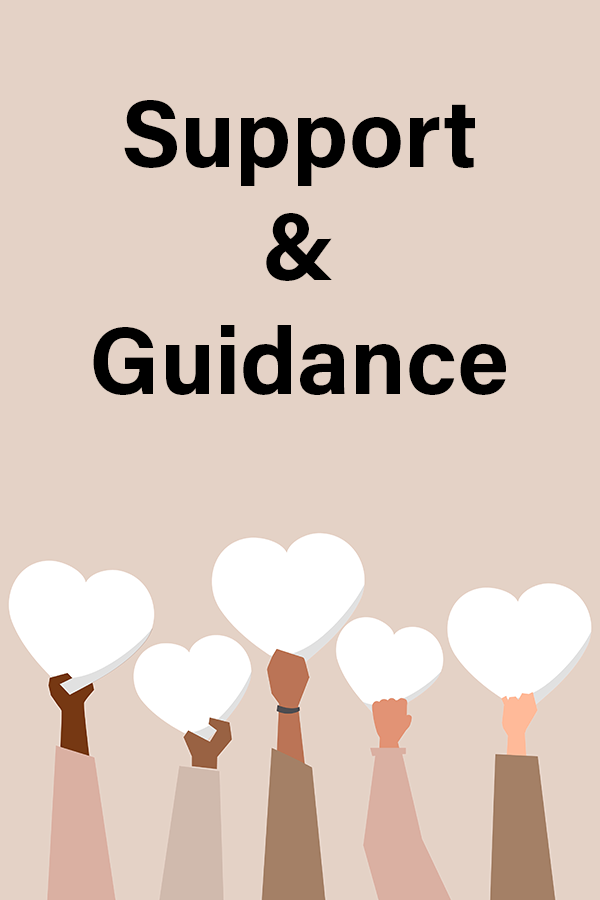Nonviolent Crisis Intervention
Nonviolent Crisis Intervention (NVCI) is a behavior management system developed by the Crisis Prevention Institute (CPI) to help individuals manage disruptive or potentially violent behavior. NVCI is a comprehensive approach that includes multiple facets that work together to create a safe environment and deescalate a crisis situation.Benefits of Nonviolent Crisis Intervention include:
Improved Safety
NVCI helps individuals create a safer environment by establishing clear policies and procedures, building positive relationships, promoting open communication, and using physical interventions only as a last resort.Enhanced Communication
NVCI promotes effective communication techniques, such as active listening, nonverbal communication, and verbal techniques, to reduce tension and promote a sense of calm.Reduced Liability
By using the least restrictive intervention possible and documenting any physical interventions that are used, individuals can reduce their liability and ensure accountability.Nonviolent Crisis Intervention Creates Increased Confidence
NVCI training can increase staff members’ confidence in managing crisis situations, which can reduce stress and anxiety and promote a safer environment.Improved Outcomes
By using prevention, de-escalation, intervention, and postvention techniques, individuals can effectively manage crisis situations and prevent similar situations from occurring in the future. The benefits of NVCI are numerous and can help individuals create a safer, more supportive environment for everyone involved.

Here are the different facets of Nonviolent Crisis Intervention:
Prevention
The first facet of NVCI is prevention. This involves understanding the behavior patterns of the individuals and anticipating potential crisis situations. It also involves creating a safe environment by establishing clear policies and procedures, building positive relationships, and promoting open communication.
The prevention aspect of Nonviolent Crisis Intervention (NVCI) is the first and perhaps the most crucial facet of the system. It focuses on identifying and addressing potential triggers of crisis behavior and promoting a safe environment to prevent crisis situations from occurring. Here are some key elements of the prevention aspect of NVCI:
Understanding Behavior Patterns
To prevent crisis situations, it is essential to understand the behavior patterns of the individuals in question. This involves assessing their needs, preferences, and limitations, and identifying potential triggers of disruptive or violent behavior.
Clear Policies and Procedures
Establishing clear policies and procedures is essential to prevent crisis situations. This involves defining acceptable behavior, setting boundaries, and outlining consequences for violating policies. Having a clear understanding of expectations can help reduce stress and anxiety and promote a safer environment.
Positive Relationships
Building positive relationships is a crucial part of the prevention aspect of NVCI. This involves establishing trust, showing respect, and fostering open communication. Positive relationships can help individuals feel supported and valued, which can reduce the likelihood of disruptive behavior.
Communication
Effective communication is essential to prevent crisis situations. This involves using active listening skills to understand the individual’s perspective and using clear, concise language to convey information. Effective communication can help prevent misunderstandings and promote a sense of calm and control.
Environmental Modifications
Modifying the environment can help prevent crisis situations. This involves creating a safe and comfortable space that meets the individual’s needs and preferences. Environmental modifications can include adjusting lighting, temperature, noise levels, and other factors that can impact an individual’s behavior.
The prevention aspect of NVCI is focused on creating a safe and supportive environment that reduces the likelihood of disruptive or violent behavior. By understanding behavior patterns, establishing clear policies and procedures, building positive relationships, promoting effective communication, and making environmental modifications, individuals can prevent crisis situations and promote a safer environment for everyone involved.
De-escalation for Nonviolent Crisis Intervention
The second facet of NVCI is de-escalation. This involves using verbal and nonverbal communication techniques to reduce the intensity of a crisis situation. It also involves understanding the underlying causes of the behavior and providing support and guidance to the individuals in crisis. The de-escalation aspect of Nonviolent Crisis Intervention (NVCI) is a critical component of the system that aims to reduce the intensity of a crisis situation and prevent it from escalating further. It involves using verbal and nonverbal communication techniques to establish a rapport with the individual and help them regain control of their behavior. Here are some key elements of the de-escalation aspect of NVCI:Active Listening
Active listening involves giving full attention to the individual and showing that you are trying to understand their perspective. This can help build trust and rapport, which can be critical in de-escalating a crisis situation.Nonverbal Communication
Nonverbal communication, such as body language and tone of voice, can convey a sense of empathy, respect, and understanding. This can help reduce tension and promote a sense of calm.Verbal Techniques
Verbal techniques, such as using open-ended questions, offering choices, and reflecting feelings, can help the individual feel heard and understood. This can help them feel more in control of the situation and reduce their anxiety.Problem Solving
Problem-solving involves identifying the underlying causes of the behavior and working collaboratively with the individual to find a solution. Problem solving can help the individual feel empowered and reduce their sense of frustration and helplessness.Respect for Dignity
Respecting the individual’s dignity and treating them with respect and empathy is essential in de-escalating a crisis situation. Respect for dignity can help the individual feel valued and understood, which can reduce the likelihood of the situation escalating further. The de-escalation aspect of NVCI is focused on reducing the intensity of a crisis situation and helping the individual regain control of their behavior. By using active listening, nonverbal communication, verbal techniques, problem-solving, and treating the individual with dignity and respect, individuals can effectively de-escalate crisis situations and promote a safer environment for everyone involved.

Intervention
The third facet of NVCI is intervention. This involves using physical interventions to protect the individuals in crisis and others around them. The intervention phase of Nonviolent Crisis Intervention (NVCI) is a last resort when other efforts to de-escalate a crisis situation have failed. It involves using physical interventions to protect the individual and others from harm. However, it is important to note that physical interventions should only be used when necessary, and they should be the least restrictive possible. Here are some key elements of the intervention phase of NVCI:Least Restrictive Intervention
The intervention should be the least restrictive possible, meaning that it should use the least amount of force necessary to control the situation. Least restrictive intervention helps to prevent harm to the individual and maintain their dignity and self-respect.Risk Assessment
Before any physical intervention is used, a risk assessment should be conducted to determine the potential risks and benefits of the intervention. Risk assessment involves assessing the individual’s physical and mental health status, the severity of the behavior, and the potential risks to others.Techniques
There are various physical intervention techniques that can be used in the intervention phase of NVCI, such as holding and escorting techniques, and disengagement techniques. These techniques should be taught by trained professionals and used only when necessary.Documentation
It is important to document any physical interventions that are used, including the reasons for using the intervention, the technique used, and any injuries that may have occurred. Documentation helps to ensure accountability and provide information for future prevention efforts.Debriefing
After a physical intervention has been used, a debriefing session should be conducted to review the situation and identify ways to prevent similar situations in the future. Debriefing involves discussing what went well, what could have been done differently, and what can be learned from the situation. The intervention phase of NVCI is a last resort and should only be used when necessary to protect the individual and others from harm. By using the least restrictive intervention possible, conducting a risk assessment, using appropriate techniques, documenting the intervention, and debriefing afterward, individuals can effectively manage crisis situations while promoting safety and maintaining dignity and respect.Nonviolent Crisis Intervention: Postvention
The fourth facet of NVCI is postvention. The postvention aspect of Nonviolent Crisis Intervention (NVCI) is an important part of the system that focuses on providing support and guidance to individuals after a crisis situation has occurred. Postvention involves debriefing and reviewing the situation and identifying ways to prevent similar situations from occurring in the future. Here are some key elements of the postvention aspect of NVCI:Debriefing
Debriefing is an important part of the postvention aspect of NVCI. It involves reviewing the crisis situation with those involved, including the individual in crisis, staff members, and any other stakeholders. The debriefing session should be conducted in a supportive and non-judgmental manner, with the focus on learning from the situation.Support and Guidance
After a crisis situation has occurred, it is important to provide support and guidance to the individual and any other stakeholders involved. Support and guidance can include counseling, referrals to community resources, and ongoing support to help prevent future crises.Review and Analysis
Reviewing and analyzing the crisis situation is an important part of the postvention aspect of NVCI. This involves identifying what went well, what could have been done differently, and what can be learned from the situation to prevent similar situations in the future.Documentation
Documenting the crisis situation is important for accountability and to provide information for future prevention efforts. Documentation includes documenting the details of the crisis situation, any physical interventions used, and any injuries that may have occurred.Follow-up
Follow-up is an important part of the postvention aspect of NVCI. This involves checking in with the individual and any other stakeholders involved to ensure that they are receiving the support and guidance they need to prevent future crises. The postvention aspect of NVCI is focused on providing support and guidance to individuals after a crisis situation has occurred. By debriefing, providing support and guidance, reviewing and analyzing the crisis situation, documenting the details, and following up, individuals can effectively prevent future crises and promote a safer environment for everyone involved.Summary
In sum, nonviolent crisis intervention is a comprehensive approach to crisis management that emphasizes prevention, de-escalation, intervention, and postvention. By using these different facets, individuals can better manage disruptive or potentially violent behavior and create a safer environment for everyone involved.

